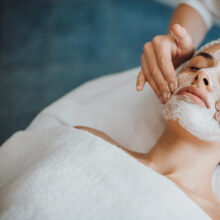Retail Sales at Spas are Good for the Customer and the Spa
- Published: Thursday, November 29th 2007
- in Living Well
I posted the Retail Sales post which follows last week and soon after the post went live, I received an email from someone suggesting that it wasn’t a good idea for me to post it because spa consumers – not just spa industry professionals – might read it. In the post I was talking about the importance of retail sales for a spa’s bottom line. Since I was rather busy and didn’t have time to reread my blog to consider editing it, I asked my assistant just to pull it for now until I could take another look…which I did this morning. And have decided….I am posting it as is.
One thing I have learned about blogs is that truth is what people want. Trying to “look a certain way,” “sell,” or “promote” isn’t what blogs are about. My blog is just a place for me to share my views, my feelings, my ideas….and given that I have been in the spa industry for 30 years, have a passion for it, have visited a lot of spas, have run my own spas and businesses and am in the loop on most spa happenings around the world, well, I guess some people feel that my thoughts are interesting and maybe even useful to them – both consumers and spa professionals. So I don’t really think much about who the audience is but rather just write “top of mind” as someone suggested I do when I began. Blogs generally find their audience over time and I don’t consider it my job to try and widen my blog’s appeal. My job is to be transparent and truthful.
Regarding spa consumers…I have come to have a great deal of respect for them. They are bright, savvy people. Gary Walther, the editor in chief of Luxury SpaFinder Magazine, taught me this. He writes to his audience with a high level of respect and admiration. He doesn’t “speak down” or treat an audience as if they are youngsters. I have really liked that approach.
Therefore, it seems just fine to me for spa consumers to learn that a spa needs to have retail sales in order to make a profit and keep prices of services reasonable. Since consumers are buying products (especially skin care products) somewhere anyway, there is nothing wrong with asking them to please buy them from us. Intuitively spa-goers know that when a trained aesthetician spends at least an hour working with a client’s skin – and has trained extensively on whatever spa product brand they are using – it isn’t such a bad idea to follow their advice. It seems more reasonable to me than going with what a salesperson at a department store recommends after a 2 minute conversation. And yes, aestheticians often get a percentage of the sale (usually around 10%) but consumers know that when they buy things like clothes, electronics, cars, etc. that the salesperson is likely to receive a commission. Well, it’s the same thing for many spa product sales.
So….for the second time now, I am going to hit the “publish post” button and hope you don’t mind the transparency.
From my notes at the recent ISPA conference re the 2007 Spa Industry research study results: Retail Purchase Effect on Retention
- 0 spa products bought = 40% customer return rate
- 1 spa product bought = 70% customer return rate
- 2 spa products bought = 80% customer return rate
I thought wow! What a great thing to know…and what a smart thing for spas to teach their staff! This information should be spread across the spa world like wildfire.
Intuitively it makes sense that when a client purchases a product at a spa, it means they had confidence in the spa and will now stay more connected since the product will remind them of the spa every time they use it at home. It is also very possible that whatever products were bought (skin care in which the customer has been educated is the number one seller) has given them good results which brings them back to the spa.
Attaining a 70% or 80% return rate at a spa is no small feat. As we know in business, it is less expensive to get customers to come back than to attract new customers. And doing so by establishing a relationship through a product is a very positive way to do that. Spa therapists in particular will find this motivating since they do want to have repeat clientele. Even if they are not oriented toward product sales, they do want to see a client come in regularly, improve their skin, stress level, etc. And this is one very tangible way to do so.
When I later purchased the ISPA study, I could not find those statistics in there. Perhaps I missed it, or perhaps they are published somewhere else in an earlier study? At any rate, I thought these numbers were important findings and worth passing on. So spread the word!


